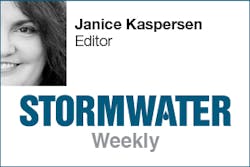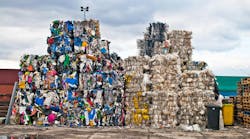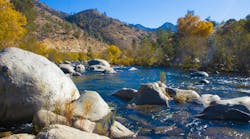
Missouri University of Science and Technology announced this week that one of its researchers has found a way to predict how water flows underground—and how pollutants travel with it. Dr. Xiaoming He, an assistant professor of mathematics and statistics, is using a mathematical model to simulate how water follows fractures, channels, and conduits beneath the surface.
The university notes that the work has implications for many types systems where we might want to understand where free-flowing water goes—groundwater systems and oil extraction operations being just two of them. Missouri, of course, has quite a bit of karst terrain—that is, limestone or other erodible rock that has been dissolved by water over great periods of time, causing underground passages and caverns and, on the surface, sinkholes. The model is well suited to predict how water will flow within such subsurface terrain in the many states where it occurs. “For example, Florida has over 90% of its underground water flowing through a karst aquifer, which is a type of subsurface rock that is formed by its own dissolution,” says Dr. He. “By tracking the water through this fractured area, we can better predict things such as pollutant transportation.”
Karst topography poses some unusual challenges for water-quality management, especially in agricultural areas where fertilizers, pesticides, and manure are funneled into the groundwater system along with stormwater runoff. As this article from Stormwater points out, karst terrain is present in 18% of the lower 48 states of the US and 25% of the world.
This article from one of our early issues examines the issue of agricultural runoff and karst terrain in West Virginia’s Greenbrier Valley. The author, accompanied by two USDA Agricultural Research Service specialists who were studying local groundwater quality, ventured down into the caves and waded through waist-deep water some 500 feet below the surface to investigate.
You can read more on the Missouri S&T research here.
About the Author
Janice Kaspersen
Janice Kaspersen is the former editor of Erosion Control and Stormwater magazines.

